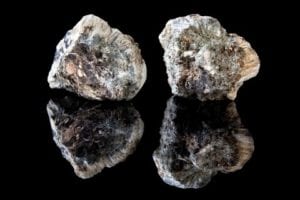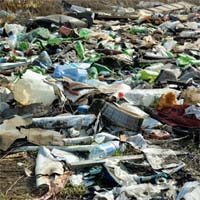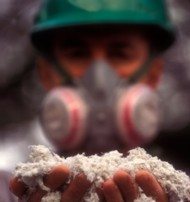Asbestos Raises Mesothelioma Risk, Regardless of Type

A new report led by the National Cancer Institute offers further evidence that every type of asbestos raises mesothelioma risk.
Scientists have known since the 1950s that asbestos is the main cause of mesothelioma. But some have argued that not all types of asbestos are equally dangerous.
The new study refutes that idea. Researchers compared outcomes from people exposed to different kinds of asbestos. They conclude that asbestos raises mesothelioma risk, regardless of type.
Asbestos as a Carcinogen
Asbestos is a naturally-occurring mineral. It has to be mined from the ground. Asbestos is strong, cheap, and impervious to heat and chemical erosion. It was a popular additive to many products before doctors realized that asbestos raises mesothelioma risk.
The most common types of asbestos are white (chrysotile), brown, (amosite), or blue (crocidolite). The different types have fibers of slightly different shapes and lengths. Chrysotile is the type most frequently used in industry.
Workers who inhaled or swallowed asbestos dust have higher rates of lung cancer and mesothelioma. The US Department of Health and Human Services, the EPA, and the International Agency for Research on Cancer all agree that asbestos raises mesothelioma risk.
Which Asbestos Raises Mesothelioma Risk?
Scientists know that asbestos causes cancer. The goal of the new study was to see if some types of asbestos are more dangerous than others.
The NCI researchers used occupational data on 508 workers. Some of the workers had a history of asbestos exposure. A total of 176 of them developed malignant mesothelioma.
Some workers only worked with chrysotile asbestos. Others worked with a mix of different asbestos fibers. Researchers analyzed which workers got mesothelioma and what kinds of asbestos they worked with.
They found that chrysotile asbestos raises mesothelioma risk by itself. A mix of different kinds of asbestos carried a slightly higher risk. People with no asbestos exposure had the lowest risk for mesothelioma.
“Our findings suggest that policies aimed at regulating asbestos should target both pure chrysotile and mixtures that include amphibole,” writes lead author Jason Wong in Occupational and Environmental Medicine.
Asbestos Still Legal in the US
Even though asbestos raises mesothelioma risk, it is not banned in the US. The EPA passed the Asbestos Ban and Phase Out Rule in 1989 but the ruling was overturned in 1991.
Many consumer products can still legally contain trace amounts of asbestos. In addition, most homes and buildings built before 1980 contain asbestos. Disturbing these fibers during remodeling or demolition can put workers at risk for mesothelioma decades later.
Sources:
Wong, J, et all, “Mesothelioma risk among those exposed to chrysotile asbestos only and mixtures that include amphibole: a case-control study in the USA, 1975-1980”, October 21, 2020, Occupational and Environmental Medicine, https://oem.bmj.com/content/early/2020/10/21/oemed-2020-106665





